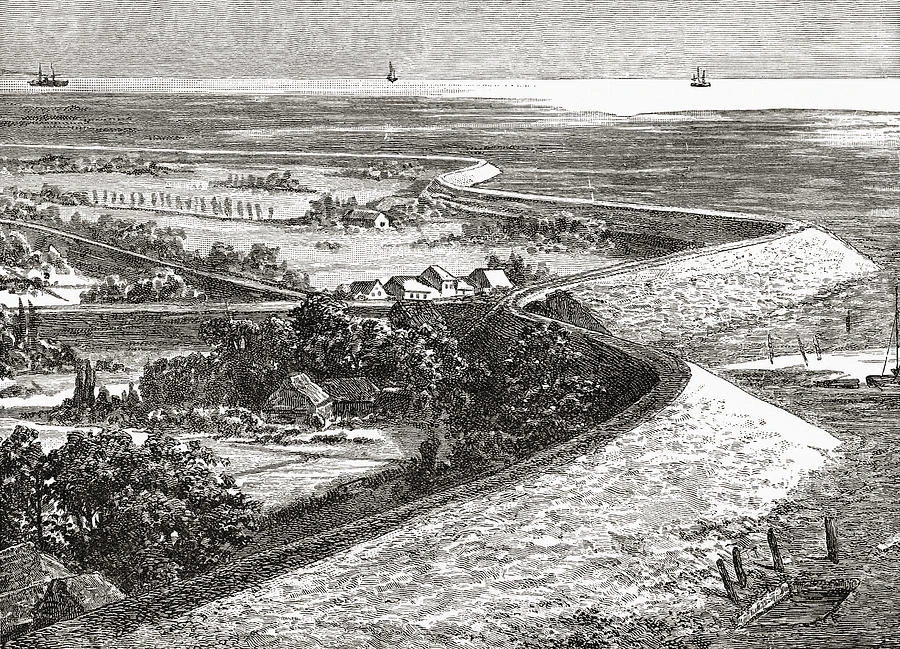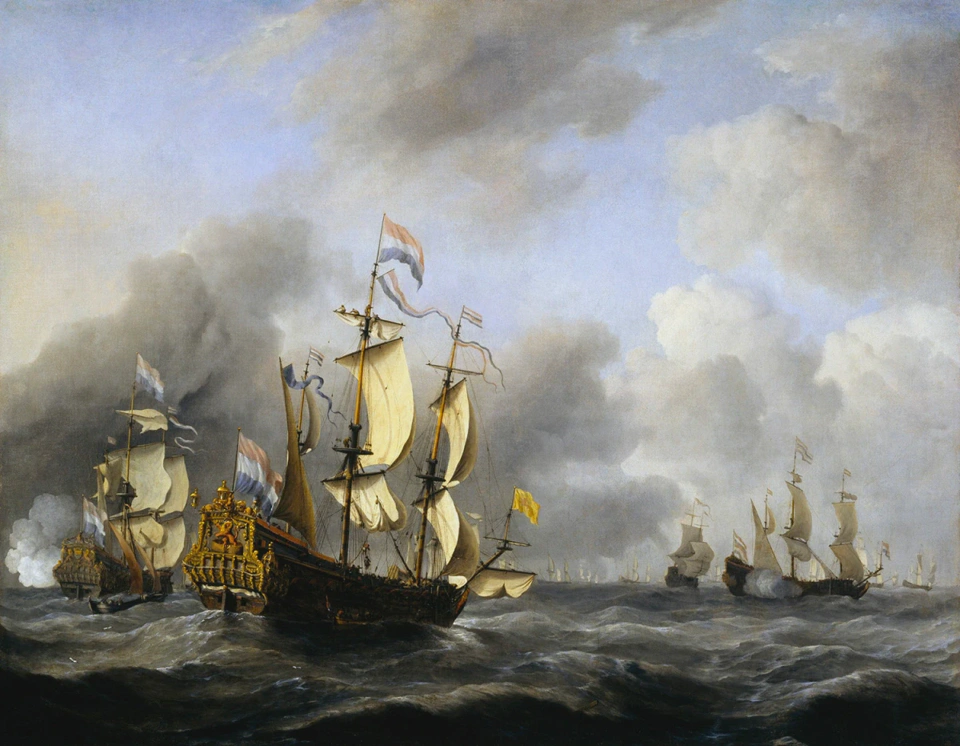Funny and entertaining travelogue divided into seven chapters, each covering a different aspect of Dutch history and culture and with interesting historical trips.
Summary and notes
- Water: Most of the Netherlands has been reclaimed from nature. Nature is something to control; immaculate gardens, clean windows, and order are ways to show it. Windmills were originally used to reclaim land. Schiphol means “ship-hole” because it was a shipwreck hotspot part of a lake. Dutch people are tall because of a high lactose diet due to cows (flat land). High population density. Great (flood) disaster of 1953 and the Delta Works.
- The Religious Divide: Despite the centuries-old division between Protestantism and Catholicism, Dutch people had to work together to keep water from taking back their land. The South is Catholic (wild carnivals), the North Protestant. Primacy of family and duty to parents. Work ethic and frowning on frivolity or excessive luxury come from Protestantism.
- The Golden Age: Jan Huyghen van Linschoten and his “Travel Accounts of Portuguese Navigation in the Orient” book triggered an era of expeditions. The government created the Dutch West and East India Companies to manage the ensuing chaos. Suriname. War with the English. Flourishing Calvinist mercantile class believing that wealth should be used to support culture. Slave trade (London’s prominent monument to slavery vs Amsterdam’s secluded one). Demise of the empire due to competition, thinner margins, and more conflicts with England.
- Fire and Ashes: Five years of hardship and suffering, the war3/4 of all Dutch Jews killed, the Hunger Winter, Germans destroyed all the infrastructure they could on their retreat, Dutch’s recovery (cyclism), national feeling of moral triumph obscured some of the evil done by Dutch collaborators (Anne Frank’s family was arrested by Dutch policemen), Camp Westerbork.
- Total Football: Football is important to the Dutch. I skipped most of this chapter.
- Mosques on the Maas: Immigration from Turkey and Morocco encouraged in the 1960s and 1970s thanks to the post-war economic boom. Many of the Moroccans that came, though, didn’t integrate, and their intolerance and behavior continue to be a source of problems. Should tolerant people tolerate the intolerant? Pim Fortuyn, Theo van Gogh, Ayaan Hirsi Ali, Geert Wilders, Ahmed Aboutaleb.
- Sex, drugs, tolerance: tolerant tradition partly because flat geography made it harder to fence off outsiders or hold new ideas away, partly because of the need to work together to prevent floods. However extreme tolerance didn’t scale for the Netherlands (sex trafficking, euthanasia being abused, drug tourism) and they have been limiting it in recent times. Zwarte Piet issue.
Highlights
1. Water
I often noticed that things someone who was British or French or German might think of as beautiful–a wild meadow, a tangled hedge, a stormy beach–my Dutch friends viewed as an affront to common sense and discipline. Humans, they thought, had a duty to bring nature under control wherever they found it. Trees were meant to be neatly trimmed, wildlife fenced in, and beaches enjoyed from behind high glass screens providing protection against the pesky wind.
Dutch people’s tendency to view the environment not as something to protect, but as something to protect from, was also reflected in the country’s environmental record. Per capita, its carbon emissions were almost double those of France.

In a country where poor maintenance of a dike or wall could–and often did–result in catastrophic flooding, people had a natural tendency to prioritise keeping things shipshape.
In the area where I lived, cleanliness was a mark of respectability. Doorsteps were scrubbed and hedges neatly trimmed.
It was perhaps not a coincidence that the Dutch word for ‘beautiful’ and the Dutch word for ‘clean’ were one and the same: schoon.
One of the persons who had to relocate because the government decided to give land back to the ocean:
‘We came together and the government was very reasonable,’ one farmer told the New York Times. ‘These things are not easy, but they work if there is cooperation.’
2. The Religious Divide
Also popular were the Anabaptists, perhaps because of their habit of encouraging their congregations to pray together naked.
Carnival people:
‘Are you having a good time?’ I asked in Dutch. ‘We are all Willem van Oranje,’ came the reply. ‘And we do not speak to commoners.’
According to some historians, Dutch farmers who supported the rebels even began selectively breeding orange-colored carrots, ensuring that these became far more common than the traditional brown, white, and purple varieties.
Buried in Westminster Abbey, William was commemorated by a statue in London’s St James’s Square. It depicted him on horseback, just about to trip over a molehill.
3. The Golden Age
Over the next few decades the new colony flourished, until the Dutch ill-advisedly swapped it with the English for the Caribbean outpost of Suriname in 1667. Its new owners promptly gave it a new name: New York.
Dutch words also made it into the American vocabulary: cookie, waffle, noodles, brandy, coleslaw.
Harlem was named after the Dutch city of Haarlem, Brooklyn after the small town of Breukelen, and Flushing after the southern Dutch city of Vlissingen. Wall Street was originally De Waal Street and Broadway was once better known as Breede Weg.

4. Fire and Ashes
Dutch thrift had deep roots in the Protestant work ethic, but it was easy to believe that it had been strengthened by wartime exposure to hardship.
7. Anything Goes
Political correctness was an alien concept, and people would talk openly in public about even the most delicate of subjects–their new boyfriend’s sexual preferences, say, or their sister’s embarrassing health problems.
In Amsterdam, I once saw a sixty-something prostitute in a gold bikini come out from behind her window to berate a man smoking in the street. ‘You are not making the neighborhood look so nice!’
Over time I developed the theory that the contradiction between indulgence and restriction was rooted in the delicate equilibrium between two competing forces in Dutch culture. On the one hand, the Netherlands had a long tradition of providing refuge to religious, political and scientific heretics. The Dutch therefore placed a high priority on protecting individuals’ rights to behave however they pleased, regardless of what others thought. On the other hand, theirs was also a country forged in conflict with nature, facing a constant existential threat from flooding. Good order, cooperation and discipline were essential in order to ensure the country remained dry, and hence the Dutch had developed a strong attachment to these traits. Tolerance of personal quirks was therefore balanced by intolerance of anything that suggested disorder or a lack of caution.
Connections
- Culture and neuroplasticity: We unconsciously absorb beliefs, values, and habitual questions when we are least aware of them, and as more time passes. How much of our actions are a consequence of those inheritances? We may not be aware of them at first, but with reflection, most people can uncover them and consciously decide if they want to keep them.
- Cultural Master System: Tony Robbins’s Master System as described in Awaken the Giant Within, consists of beliefs, values, references, habitual questions, and emotional state. That’s a self-help model, but I think it fits nations as well, and I have used this for important decisions regarding moving from one country to another.
- Investing: Most moats (Dutch trading empire) eventually erode, it’s a matter of time.
- Intolerance: What is the right way to deal with intolerant people? Tolerating them might mean your death. We are all connected. The air I inhale is the air you exhale. Tragedy of the commons, ignorance.
- Understanding complex systems: How much of history is objective? How much approximation error do our models of history have? How much is “history is written by the victors” and how much is narrative fallacy?
- Impermanence: Seeing the world through history makes it very clear how the only constant is change.
Why trust the author?
The author lived in the Netherlands for 5 years. He has worked as a journalist, political adviser, speechwriter, lobbyist, and aid worker. The book’s bibliography section has about 40 books about the Netherlands and he lives in Rotterdam, a working-class city.
How do I grow from this?
The book has mainly made me think about certain topics: human impact on the planet, tolerance, and the power of culture.
The most actionable thought is the reminder that culture is a powerful force and if I want to master my mind, and choose the kind of person I want to be, I need to effectively deal with that force.
ISBN: 9781857886337